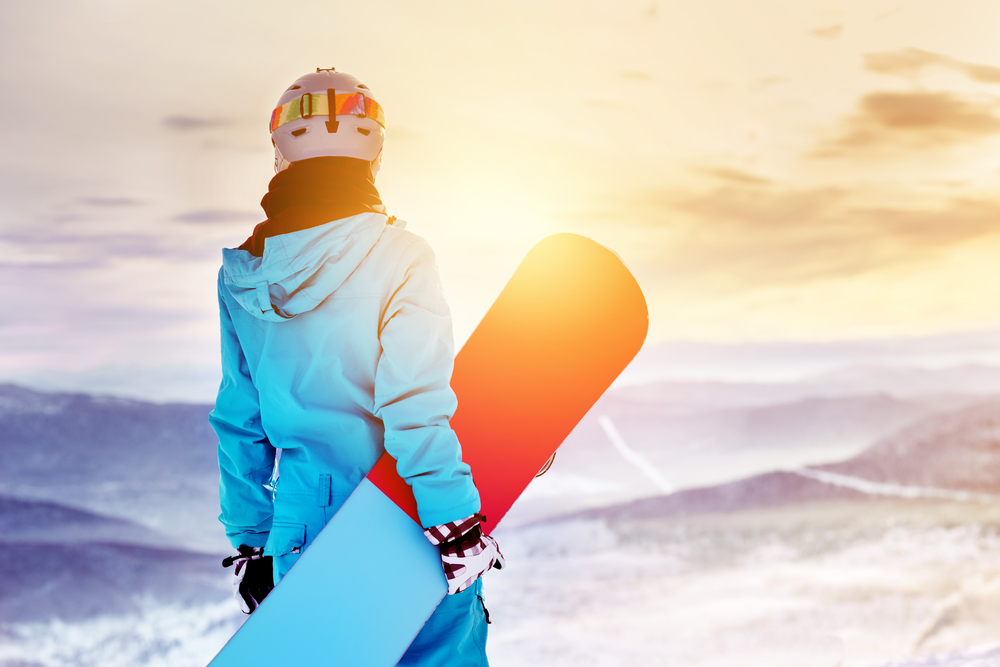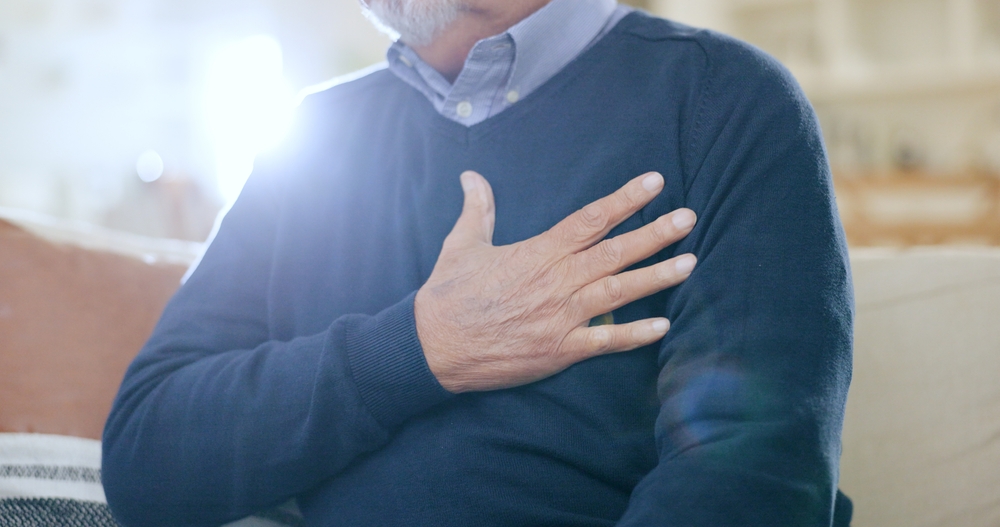Make an Appointment
Can You Snowboard With a Torn ACL?
ACL injuries are the most common injuries to endure while snowboarding. With the constant change of direction, twisting and turning and harsh landings, this sport is generally very tough on the knees.
Many snowboarders are skiers who transitioned to the sport because it’s known to be easier on the knees. In snowboarding, uncontrolled knee joint twists happen less often than in skiing. However, this doesn’t mean that injuries won’t happen.
A snowboarder can enjoy the sport for years and years as long as they take care of themselves. Let’s look at some common issues with ACL tears in conjunction with snowboarding and see how you can avoid this pesky injury.

Are knee injuries common in snowboarding?
Knee injuries in general are very common in snowboarding. As a high-impact sport with many different variables present, the chance of injury is very much possible.
Knee ligament injuries are the most prevalent type. Besides the ACL, there is also the MCL and LCL that can be commonly injured as well.
The MCL is the ligament on the inside of the knee, connecting the thigh bone and shin bone. The LCL is the ligament on the outside of the knee joint that connects the thigh bone to the fibula (a smaller bone on the bottom half of the leg).
A meniscus tear is also a common knee injury. The meniscus acts as a shock absorber in the knee.
Over time, the meniscus can wear down because of repetitive movements that place strain on the knee joint. That is a type of chronic injury that can slowly occur and then flare up suddenly. A meniscus tear can also happen abruptly, similar to the ligament injuries mentioned above.
While snowboarding, tremendous pressure is added to the lower half of the body. Landing jumps can place stress on the legs, with the knee joint taking the brunt of the impact. Twisting and turning suddenly also places stress on the knees as well.
Being aware of how your body is working while snowboarding can help you prevent common mistakes that lead to injury.
Snowboarding Knee Injury
Within snowboarding, there are many different variables at play. Other people around you may not be focused, which can cause an accident. Strong winds may hinder your balance and vision. You could misjudge a landing.
All of these factors could lead to an injury. However, a lot of knee injuries aren’t as clear as ACL injuries. People have injured their meniscus or other ligaments and barely notice right away. It’s only after continuously placing stress on the knee (which snowboarding does) that they slowly realise that the injury is present.
Sometimes the injury itself isn’t a complete cause for alarm. It’s when you continue to practice the sport while not treating the injury that issues could come into play.
An overall weakness in the legs may be assessed when an injury is present. And although you can walk perfectly fine and perform your sport, it still feels like you aren’t as strong and stable as you would like to be.
The other muscles in the legs tend to overcompensate for the weakened ligament or cartilage. This can cause a significant imbalance in the strength of your legs, leading to further injury.
It’s also important to remember that our entire body is connected. If you have any type of injury going untreated, the chances of another part of your body getting affected are definitely possible.
Many people with knee injuries notice that their back ends up in pain as well. That is because the back is working extra hard to keep the body stable, as the knee joint is struggling.

Snowboard ACL Injury
An ACL injury can happen similarly to the other injuries discussed above, however, it’s more common for this injury to occur from blunt trauma.
Having a rough, incorrect landing could cause a tear in the ACL. Any kind of torque that is too strong puts a lot of strain on the small ligament. This is common in snowboarding, as bending, twisting and unnatural movements are an everyday occurrence in the sport.
If you suddenly feel a weakness in your knee joint, particularly with a pop sound and tingling sensation, it’s likely that you have injured your ACL. However, there are a few different grades of a torn ACL that you should be aware of.
Grade 1
You are still able to bear a bit of weight, bend your knee and there will be a considerable amount of pain and swelling. This is most likely a tiny tear.
Grade 2
The function of bending and bearing weight is still possible but excruciatingly painful. This is most likely a tear of some of the ACL fibres.
Grade 3
Weight-bearing and bending of the knee aren’t possible. You will notice rapid swelling. This is a complete tear.
Grade 1 and 2 can be treated with a regimented physiotherapy programme. You will be able to repair the small and incomplete tears over time. You will also be able to strengthen the ACL itself as well as all of the surrounding ligaments and muscles, creating a stronger foundation than before.
Grade 3, however, will most likely need surgery to repair the completely torn ligament. This type of surgery takes a few months to heal, followed by physiotherapy.
The good news is that these injuries aren’t a complete threat to your time on the slopes. If you are dedicated to your physiotherapy programme and continue to rest and recover, you will be flying down the mountains in no time.

How to avoid snowboarding injuries
The best way to avoid snowboarding injuries is by being proactive. Here are some things you can incorporate to make sure you are strong on the slopes.
Cross-Training
Cross-training is the act of working muscles and parts of your body that aren’t dominant in your sport. When practising a sport that repetitively uses certain muscles, those muscles tend to get very strong. The other muscles, however, end up neglected.
Incorporating well-rounded full-body workouts that work every plane of motion is key. Some people make the mistake of only working on just the backside of their body or just the front side. It’s important to work with every side equally, as the goal is to create a strong balance between each opposing muscle group.
For example, if you are constantly working your hamstrings in the gym, but not your quadriceps, an imbalance will be created. The best way to create a programme that works for you is through aphysiotherapistor certified personal trainer.
Supportive Braces and Proper Equipment
If you’ve had knee pain in the past, investing in a good brace to wear while snowboarding can help prevent a serious injury. A knee brace can keep your knee joint stabilised and supported, ultimately preventing any twist or torque from putting too much pressure on your knee.
Getting your bindings serviced through a professional every year is key as well. Poorly adjusted bindings are one of the leading causes of knee injuries while snowboarding. It’s also key to self-test your bindings before heading on the slopes every day. If properly adjusted, both the heel and the toe should slip out easily when you test them.Although knee injuries can be scary, they are by no means the end of your snowboarding career. Through preventative measures and proper post-injury rehabilitation, you can continue to enjoy the slopes throughout your life.
Book an appointment at Physio Inq today to nip those knee issues in the bud.

What Should You Not Do With a Torn ACL?
If you’ve torn your ACL, your knee is unstable and vulnerable to further damage. Returning to high-impact or twisting activities prematurely can lead to:
- Meniscus tears
- Cartilage damage
- Knee dislocations or instability episodes
- Delayed healing and chronic pain
What to avoid with a torn ACL:
1. Twisting or pivoting movements
These strain the joint capsule and other stabilising structures. Avoid netball, basketball, and snow sports until cleared.
2. Running or jumping
Especially on uneven surfaces. These movements require dynamic stability your knee may not have.
3. Cutting or side-stepping drills
Even in the gym, these movements challenge the ACL’s role and should be supervised by a physio.
4. Ignoring rehab
Skipping physiotherapy increases your risk of long-term instability and osteoarthritis.
5. Returning too soon
Even if you feel good, strength imbalances and neuromuscular deficits may remain. Your physio will use tests to confirm readiness.
Better Health Channel – Knee Injury
Rehab isn’t just about healing, it’s about rebuilding the control and confidence to move powerfully and safely.

Frequently Asked Questions (FAQs)
Is snowboarding less risky than skiing for ACL tears?
Generally, yes. Because both feet are attached to one board, there is less twisting at the knee compared to skiing. However, snowboarding still carries ACL risk, especially during jumps or edge catches.
Can I snowboard after ACL reconstruction?
Yes, but only after clearance from your surgeon or physio, usually at 9–12 months post-op, depending on your progress.
Should I wear a knee brace?
In some cases, yes. Custom snowboarding-specific braces may offer support during the early return-to-sport phase.
What exercises can help me get back on the slopes?
Balance drills, plyometrics, agility work, single-leg strength training, and neuromuscular retraining are essential. Your physio will guide you.
What happens if I snowboard without an ACL?
It increases your risk of knee instability, falls, meniscus injury, and long-term damage. It’s possible for some, but only with strong quads, good control, and professional oversight.

Snowboarding with a torn ACL is possible, but not without risks. With proper rehab, planning, and support, many people return stronger and safer.
ACL rehab isn’t just about healing, it’s about restoring your power, control, and confidence. Whether you’re planning next season’s comeback or recovering from a recent fall, a physiotherapist will be your best guide.
Don’t leave your knees to chance. Let’s make your return to the mountain a strong one.
Next Steps
Call 1300 731 733 or book online for expert physiotherapy support tailored to ACL rehab and return-to-snow readiness.
You can also:
- Read more on sports injury prevention
- Explore our Injury Rehabilitation Services
- Ask your physio for a return-to-sport testing plan
- Speak to us about a custom ACL rehab program

Date Published: Thursday, July 21, 2022
Date Modified: Friday, November 17, 2023
Locate a Mobile Physiotherapy
Service Near me
Get the experience & convinence you deserve to support your or a loved one's allied health needs.
Our Mobile Physiotherapy team are currently serving & taking appointments in the following states and regions in Australia:
Need to get into direct contact with ur Client Services team? We're all ears. Call our team directly on 1300 731 733








